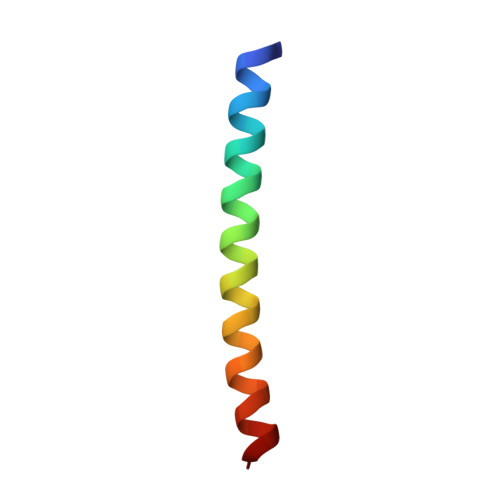How Outer Coordination Sphere Modifications Can Impact Metal Structures in Proteins: A Crystallographic Evaluation.
Ruckthong, L., Stuckey, J.A., Pecoraro, V.L.(2019) Chemistry 25: 6773-6787
- PubMed: 30861211
- DOI: https://doi.org/10.1002/chem.201806040
- Primary Citation of Related Structures:
6EGL, 6EGM, 6EGN, 6EGO - PubMed Abstract:
A challenging objective of de novo metalloprotein design is to control of the outer coordination spheres of an active site to fine tune metal properties. The well-defined three stranded coiled coils, TRI and CoilSer peptides, are used to address this question. Substitution of Cys for Leu yields a thiophilic site within the core. Metals such as Hg II , Pb II , and As III result in trigonal planar or trigonal pyramidal geometries; however, spectroscopic studies have shown that Cd II forms three-, four- or five-coordinate Cd II S 3 (OH 2 ) x (in which x=0-2) when the outer coordination spheres are perturbed. Unfortunately, there has been little crystallographic examination of these proteins to explain the observations. Here, the high-resolution X-ray structures of apo- and mercurated proteins are compared to explain the modifications that lead to metal coordination number and geometry variation. It reveals that Ala substitution for Leu opens a cavity above the Cys site allowing for water excess, facilitating Cd II S 3 (OH 2 ). Replacement of Cys by Pen restricts thiol rotation, causing a shift in the metal-binding plane, which displaces water, forming Cd II S 3 . Residue d-Leu, above the Cys site, reorients the side chain towards the Cys layer, diminishing the space for water accommodation yielding Cd II S 3 , whereas d-Leu below opens more space, allowing for equal Cd II S 3 (OH 2 ) and Cd II S 3 (OH 2 ) 2 . These studies provide insights into how to control desired metal geometries in metalloproteins by using coded and non-coded amino acids.
Organizational Affiliation:
Department of Chemistry, University of Michigan, Ann Arbor, Michigan, 48109, USA.
















